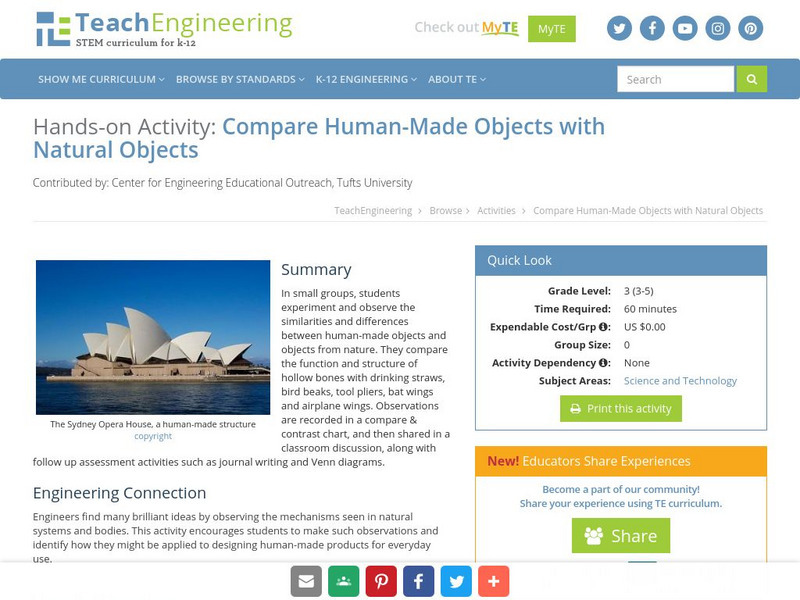Hi, what do you want to do?
Curated OER
Wh0-o-o-o's Out There?
Fifth graders describe the physical features of an owl and identify survival adaptations. They Investigate an owl's niche in an ecosystem. The students participate in an interactive puzzle on the internet that helps for motivation.
Curated OER
FLY HIGH!!!
Students create their own bird study in their own schoolyard using the scientific method (see Testing a Hypothesis in Join the Project). Students do research in the library, at a local college, or on the Internet to determine the...
Curated OER
Dancing Flamingos
Students, through the media of dance and drama, discover how an animal's behavior helps them to survive in the environment. They practice performing or mimicking how a flamingo's acts and positions itself when being observed. The...
Curated OER
Explorations Through Time
In this earth history worksheet, high schoolers visit a website and complete 15 fill in the blank and 8 short answer questions based on what they read. Topics include biodiversity, animal kingdoms, evolution, fossils, and extinction.
Smithsonian Institution
Smithsonian Learning Lab: Looking at Bird Beaks
Use this activity as an introduction to adaptations. Students will view video clips of birds and formulate their own observations and explanations for the different types of bird beaks and how they are used.
PBS
Pbs Learning Media: Bird Beak Gallery
This collection of images of ten different birds illustrates the diversity of bird beaks.
PBS
Pbs Learning Media: Bird Food and Bird Beaks
There are almost as many types of bird beaks as there are types of food that birds like to eat. This collection of images shows a wide range of beaks and the types of foods handled by each.
Other
Explore Learning: Rainfall and Bird Beaks
Explore how environmental conditions affect the adaptation of birds in this simulation. The amount of annual precipitation on an island is controlled by you while you track changes in the thickness of bird beaks over a five-year period....
Smithsonian Institution
Smithsonian National Zoo: Bird Bill Matching Game
Can you identify the purpose of different bird beaks? Read up about the different types of beaks and then you'll apply your knowledge by identifying the purpose of different shaped beaks.
Merriam-Webster
Merriam Webster: Dictionary Illustration: Bird Beaks and Bills
Labeled illustrations demonstrating the diversity of bird mouth parts, each adapted for particular purposes.
San Diego Zoo Global
San Diego Zoo: Birds
This resource provides detailed information about birds, as well as several pictures.
CK-12 Foundation
Ck 12: Life Science: 10.18 Bird Diversity
Learn about some of the bird adaptations that help birds survive.
South Carolina Educational Television
Know It All: Bird Adaptations
Fourth graders will engage in a project-based learning lesson to discover how beak adaptations affect what birds eat.
Vision Learning
Visionlearning: Biology: Galapagos Finches
Interactive animation illustrates how Charles Darwin used his study of finch beaks to explain evolution. A phylogenetic tree diagram shows how the birds' color and beak shape changed over generations.
TeachEngineering
Teach Engineering: Compare Human Made Objects With Natural Objects
In small groups, students will experiment and observe the similarities and differences between human-made objects and nature. The students will compare the function and structure of hollow bones with drinking straws, bird beaks, tool...















